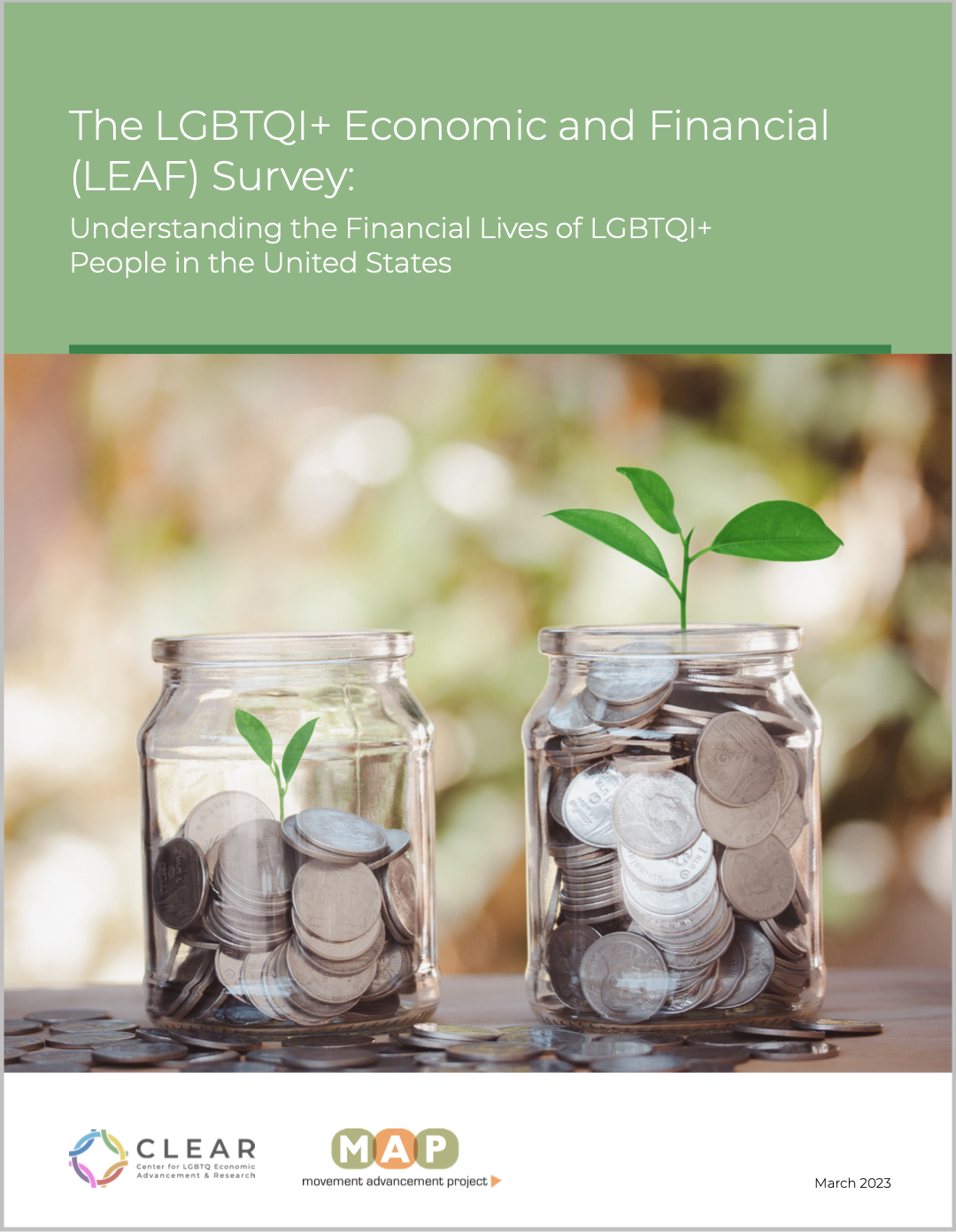"4 Ways Companies Can Support the LGBTQ Community All Year Long"View Brief
The LGBTQI+ Economic and Financial (LEAF) Survey: Understanding the Financial Lives of LGBTQI+ People in the United States, a report by MAP and the Center for LGBTQ Economic Advancement and Research (CLEAR,) shines new light on the financial experiences and issues faced by LGBTQI+ people in the U.S.
Filling in critical gaps left by many federal and financial industry surveys that fail to include LGBTQI+ demographics, the report analyzes results from a survey of 2,505 LGBTQI+ and 503 non-LGBTQI+ adults, conducted from December 2022 to January 2023. Some key findings include:
- LGBTQI+ people reported losing the ability to rely financially on their families after coming out. While 73% of LGBTQI+ respondents said they could rely financially on their family before telling them about their sexual orientation, only 62% could do so after coming out. The gap was even greater for transgender respondents.
- Four in ten parents (40%) reported having some out-of-pocket legal costs related to family formation. Additionally, 43% of LGBTQI+ parents had spent $1,000+ on out-of-pocket healthcare costs for family formation; nearly a third (32%) had spent $5,000+.
- Most respondents who received gender-affirming care (82%) reported spending some money out-of-pocket. Nearly half (46%) of people who had received gender-affirming care spent $5,000+ out-of-pocket; one-third (33%) had spent at least $10,000 out-of-pocket.
- LGBTQI+ people were more likely to report negative feelings about their finances than positive ones. Roughly twice as many LGBTQI+ respondents as non-LGBTQI+ respondents reported feeling anxious, overwhelmed, and depressed about their finances.
- One in ten LGBTQI+ respondents (11%) said they had experienced discrimination in banking or financial services.
Recommended citation format:
Center for LGBTQ Economic Advancement and Research and Movement Advancement Project. March 2023.
The LGBTQI+ Economic and Financial (LEAF) Survey: Understanding the Financial Lives of LGBTQI+ People in the United States. https://www.mapresearch.org/leaf-survey-report.


